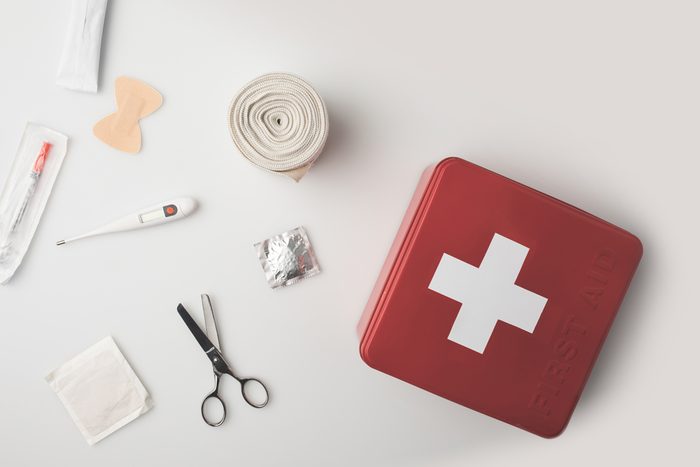
What should be in your first aid kit?
The best way to be prepared for any kind of emergency is to ask emergency room (ER) doctors what they keep in their own first aid kit. You’d be surprised what they always have on hand to stem bleeding, remove a stinger, or otherwise treat a sudden ailment or injury. While your doctor probably won’t tell you about some of these unconventional hacks, “they can get you out of trouble in extreme cases,” says Jesse Sandhu, MD, physician owner at Steamboat Emergency Center in Steamboat Springs, Colorado. These first aid supplies could even save you a trip to the ER.
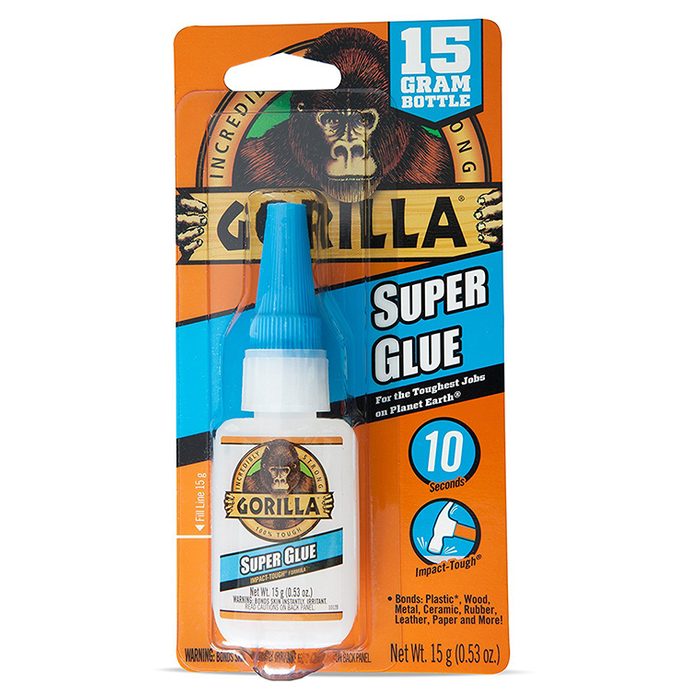
Super glue
$4.47
Who knew that this household staple can double as a medical supply? Christopher Sampson, MD, an emergency physician at the University of Missouri Health Care in Columbia, swears by it. “I keep super glue to close tiny lacerations,” he says. “It is similar to the glue we use in the emergency department.” Find out the secrets hospitals don’t want to tell you.
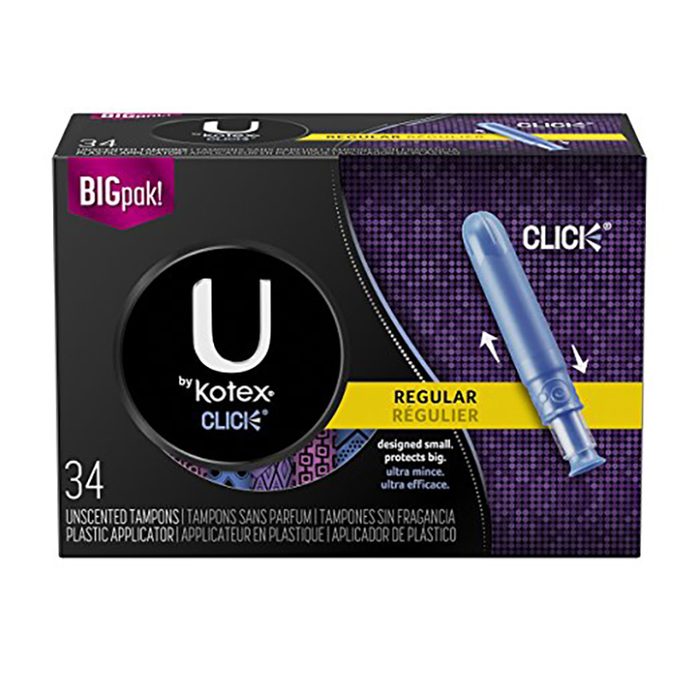
A tampon
$9.30
A tampon is a lifesaver for women should they get a surprise, of course, but did you know it can also save the day if you get a bad nosebleed? “Some may laugh at this hack, but tampons are very absorbent,” says Dr. Sandhu. “They can be used to pack bleeding wounds and also work for severe nosebleeds.” Try pinching the bridge of the nose and tilting the head forward first for about ten minutes, he says. If the bleeding doesn’t stop, gently insert the tampon and go to the ER.
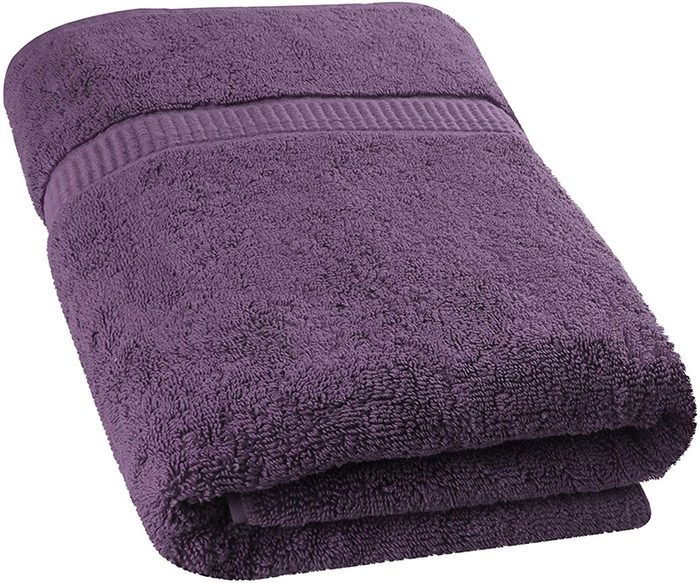
A large towel
$32.99, 2 pack
When on the road, Christina Johns, MD—senior medical adviser of PM Pediatrics in Lake Success, New York—always has a big, clean towel in her first aid kit in case someone gets a gash. “Those tiny gauze squares often just aren’t enough to help compress and control the bleeding,” she says. If the cut is on an extremity, she wraps the towel around it and applies pressure to the cut. In other cases, she folds the towel several times and applies direct pressure. After you fill your first aid kit, here are the crucial items you need in a home emergency kit.
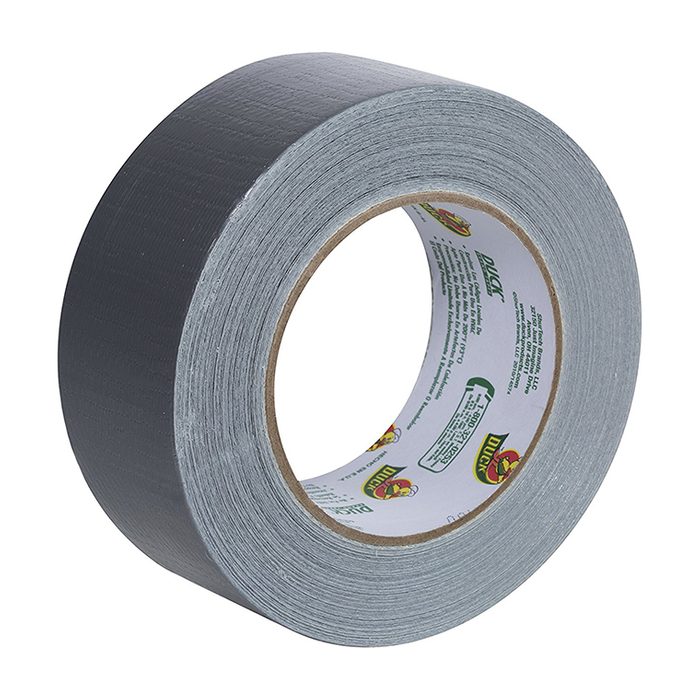
Duct tape
$11.40
Duct tape should be in every medical kit, according to several of the emergency response experts. “It can be made into a pressure dressing for bleeding wounds, used to splint broken limbs, and can even be fashioned into a sling,” Dr. Sandhu says. Plus, here are the genius first aid uses for duct tape.
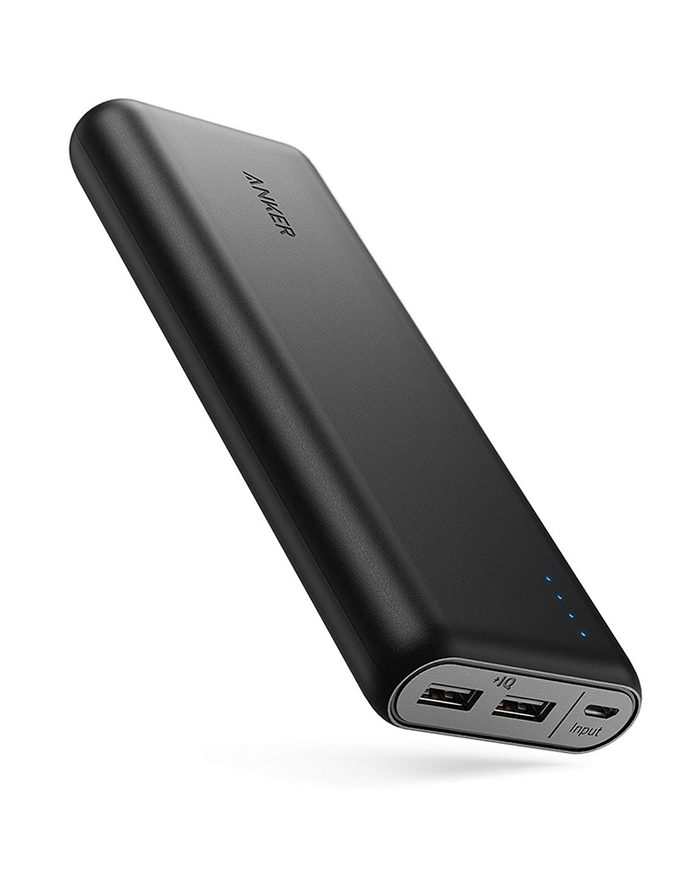
Portable phone charger
$45.99
Shari Platt, MD, chief of pediatric emergency medicine at New York-Presbyterian/Weill Cornell Medical Center, in New York City, never takes a trip without stashing a portable backup charger in her first aid kit. “Portable chargers will allow you to recharge mobile devices if you’re in a remote or secluded area without access to electricity sources,” she points out. And while you’re at it, throw an extra charger in there too. Or buy three if yours tend to go missing.
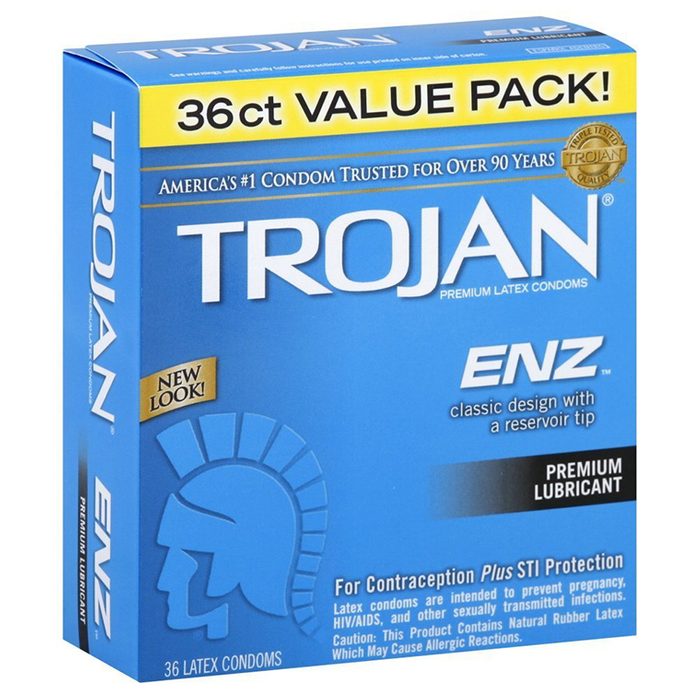
Condoms
$24.97
No, not for that reason: “A condom can actually be a lifesaver in an emergency,” says Robert Glatter, MD, an emergency physician at Lenox Hill Hospital in New York City. “It can store water, serve as a tourniquet, or be used for wound irrigation under pressure.” Irrigating or cleaning a wound under high pressure helps remove debris or foreign material. “The high pressure created by squeezing the condom helps to create a powerful jet of water, ” Dr. Glatter adds. Anybody can do this trick by poking a small hole in the condom and squeezing it when it’s full of water.
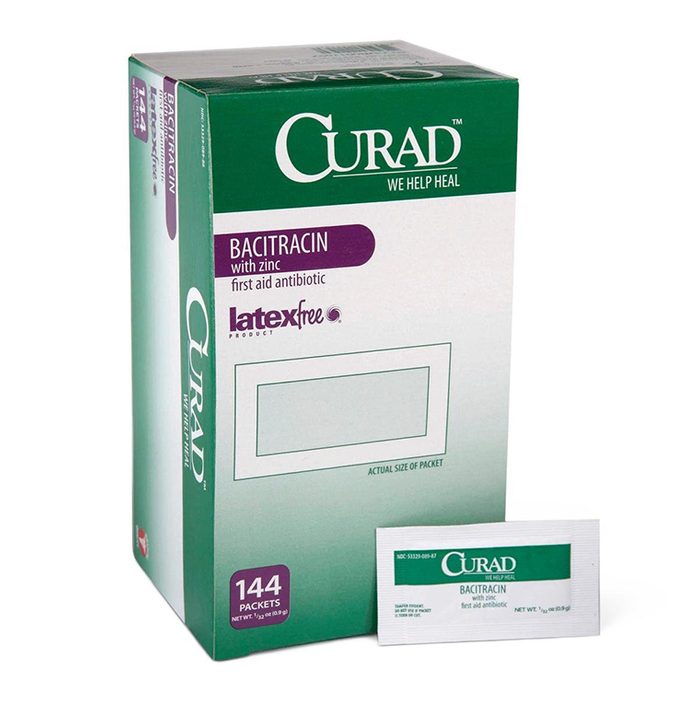
Bacitracin
$11.74
You already keep this anti-bacterial ointment in the medicine cabinet, but do you take it on trips? ER doctors sure do. “I carry Bacitracin on every trip, anywhere,” says Alexis Halpern, MD, emergency medicine physician at NewYork-Presbyterian/Weill Cornell Medical Center. “Someone will inevitably cut, scrape, or burn some part of their body. Or pull off a hangnail. It helps to prevent infection—and little kids feel really good when they get medicine on any boo-boo.”
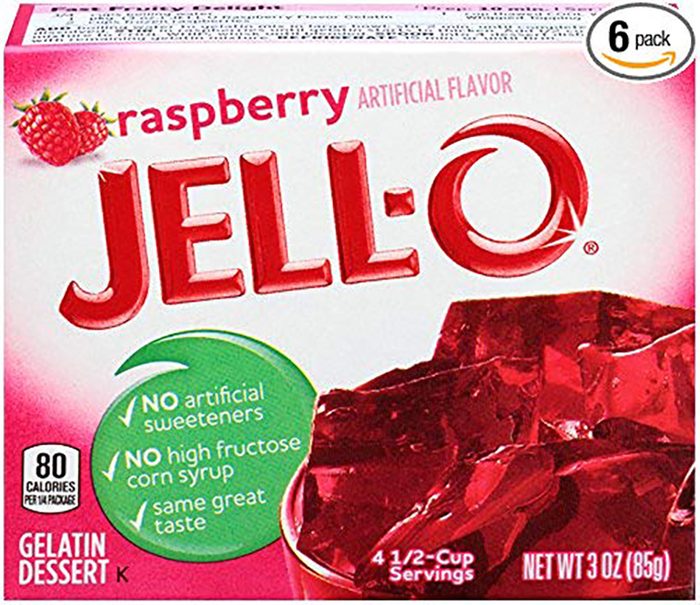
Instant Jell-O
$23.00, 3-ounce, pack of 6
Ah, the joys of Jell-O—it happens to be a sweet remedy if someone is having a spell of low blood sugar, explains Dr. Glatter: “It’s an excellent source of sugar to wake you up, caffeine-free, and it won’t lead to significant dehydration.” Just add water to the powder to reconstitute it, then drink it up. Signs of low blood sugar include dizziness, sweating, rapid heartbeat, and nausea; it can progress to seizures if not treated. Get your hands on these other 10 items you need in a home emergency kit.
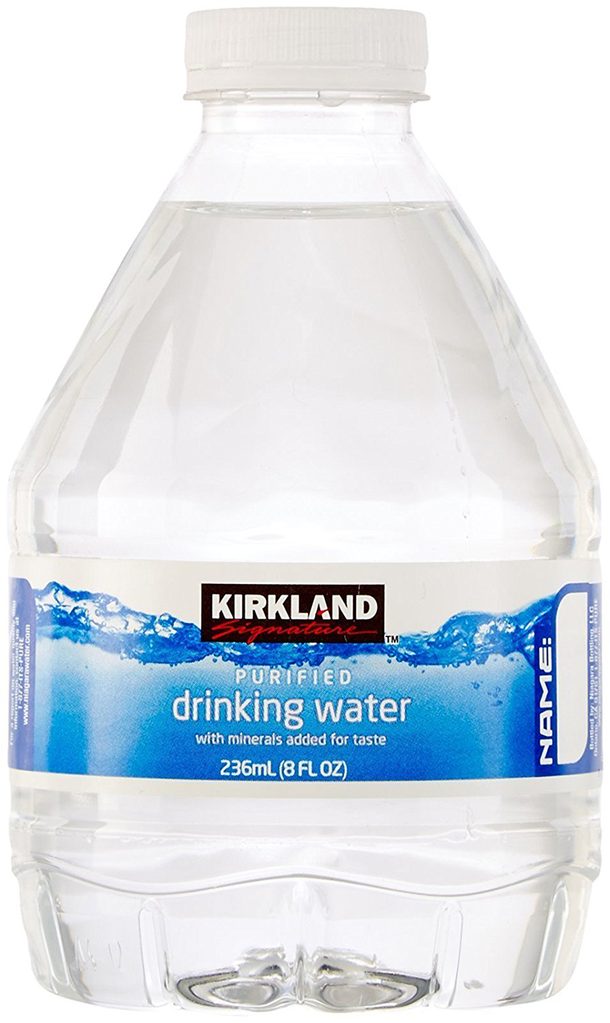
Bottled water
$39.99, 80 count
No matter how long your trip is, make sure you have a few bottles of water in with your medical supplies, advises George Hutchison, MD, emergency department medical director for CHI St. Vincent Infirmary in Little Rock, Arkansas. Rehydrating is just the beginning—the water can also be used for wound irrigation or making a cool compress for abrasions or small burns. It also serves as an eye flush in case you get dirt, sunscreen, or worse in your eye. “Just poke a hole in the top of the plastic lid,” Dr. Hutchison says.
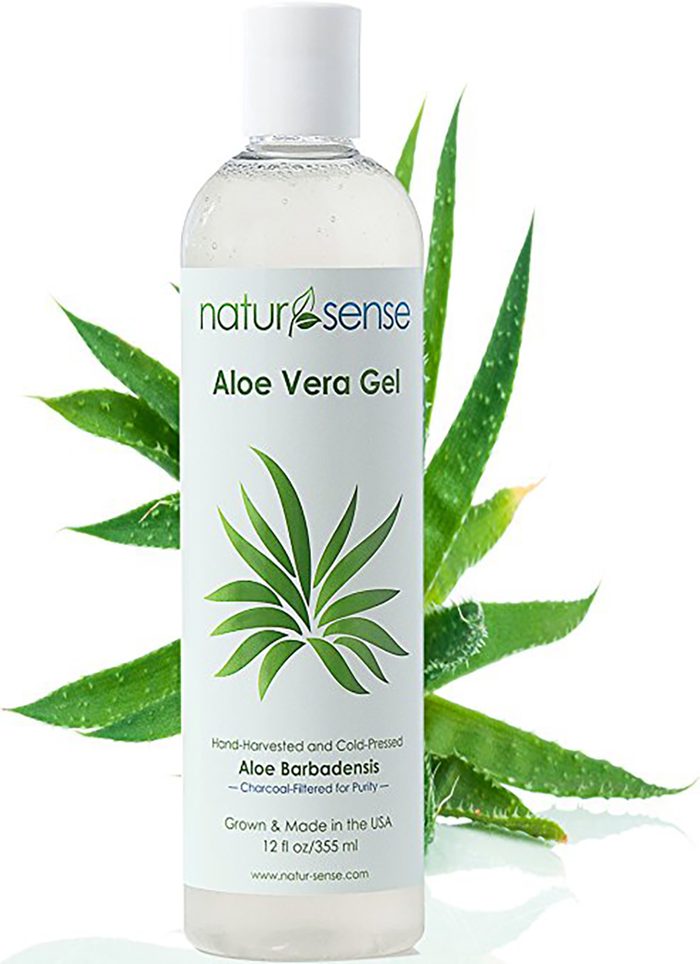
Aloe vera
$14.89
Turns out that regular aloe vera gel is a first-rate treatment for all minor burns, not just sunburns, according to Dr. Sampson. While he uses Banana Boat aloe vera, if it’s not available he says, any pure aloe vera or aloe vera solution will do the job. (Here are some aloe vera uses you may not know.)
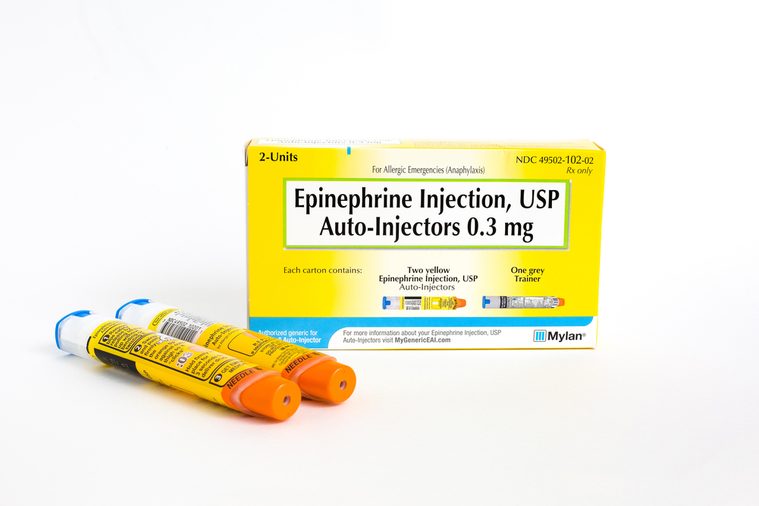
An EpiPen
If your child has been prescribed an EpiPen for food or insect allergies, you already know to carry it everywhere. But too many adults blow off carrying their own epinephrine devices. Not having that EpiPen or Auvi-Q in your travel medical kit can be a fatal mistake. “These can be life-saving in case of an acute allergic reaction, especially when traveling,” Dr. Platt says. Remember, in a severe allergic reaction, your immune system overreacts and can quickly send the body into shock, which is a life-threatening situation. That’s why it’s essential to administer epinephrine early. Make sure to avoid the common first aid mistakes that are more dangerous than you realize.
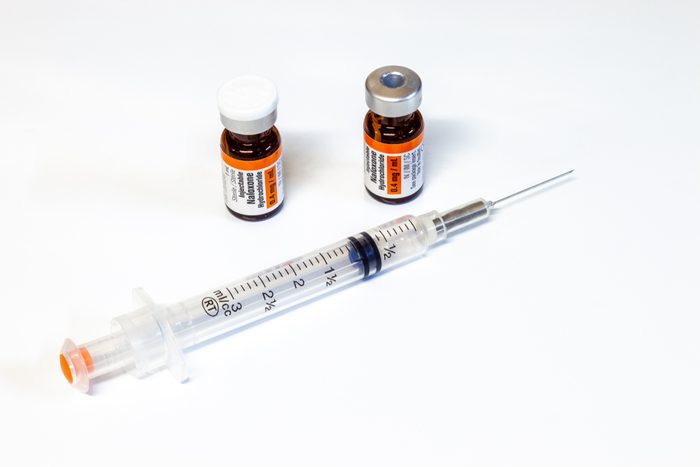
Naloxone
Deaths from opioids are at a record high. According to the latest available data by the U.S. Department of Health and Human Services, more than 47,000 people died of opioid-related overdoses. Dr. Platt wishes everyone kept Naloxone—an emergency med that reverses an overdose of opioids—in their first aid kits. “This can save a life in the case of an accidental overdose,” says Dr. Platt. It comes as an injection or as the nasal spray Narcan, and it’s available over-the-counter in many states.
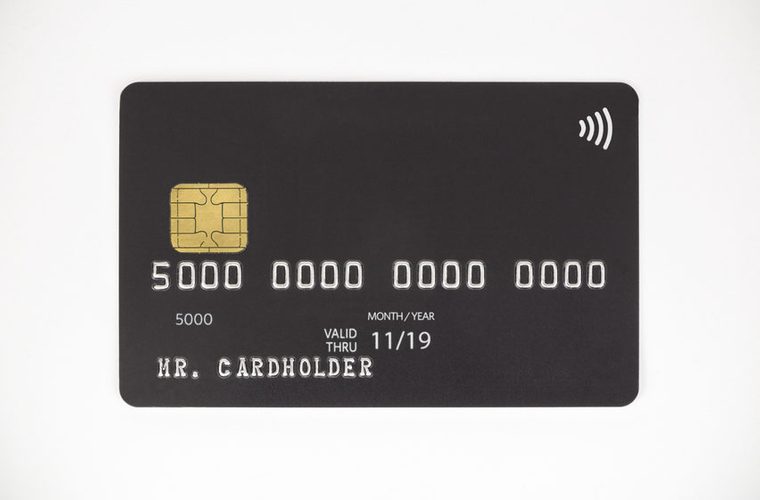
A credit card
While you don’t need to keep your Visa card in with the Band-Aids, you’ll want to whip it out of your wallet if someone in your crew gets stung by a bee. “For bites and stings, use a credit card to brush the stinger away so you don’t squeeze it and inject more venom into the puncture,” says Mary Jane Piroutek, MD, a pediatric emergency medicine specialist at CHOC Children’s in Orange, California. Then wash it thoroughly with water or an antiseptic spray and watch for signs of infection (pain, swelling, pus) or an allergic reaction (swelling, hives, itchiness). Don’t miss these other 14 items you should always keep in the house.
